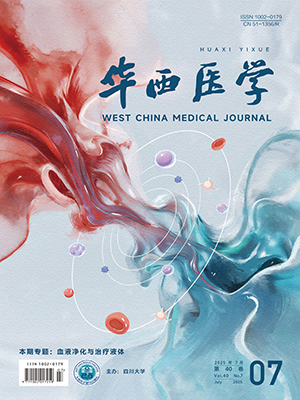| 1. |
钟伟金, 李佳. 共词分析法研究(一)——共词分析的过程与方式. 情报杂志, 2008, 27(5): 70-72.
|
| 2. |
钟伟金, 李佳. 共词分析法研究(二)——类团分析. 情报杂志, 2008, 27(6): 141-143.
|
| 3. |
钟伟金, 李佳, 杨兴菊. 共词分析法研究(三)——共词聚类分析法的原理与特点. 情报杂志, 2008, 27(7): 118-120.
|
| 4. |
沈建通, 姚乐野, 李幼平, 等. 循证医学学科知识可视化研究之一: 循证医学研究主题图谱. 中国循证医学杂志, 2011, 11(6): 613-621.
|
| 5. |
沈建通, 姚乐野, 李幼平, 等. 循证医学学科知识可视化研究之二: 循证医学作者关系结构图. 中国循证医学杂志, 2011, 11(7): 743-752.
|
| 6. |
沈建通, 姚乐野, 李幼平, 等. 循证医学学科知识可视化研究之三: 循证医学知识传播可视化研究. 中国循证医学杂志, 2011, 11(8): 858-867.
|
| 7. |
李一飞. 基于多元统计和社会网络分析 PubMed 数据库儿童心血管学科知识发展可视化研究. 中国循证儿科杂志, 2014, 9(2): 89-100.
|
| 8. |
廖春雨. 锁定钛板固定结合负压封闭引流技术治疗复杂的跟骨骨折. 医学理论与实践, 2015, 28(21): 2949-2950.
|
| 9. |
王艺. 银离子藻酸盐敷料联合多爱肤敷料用于藏毛窦切除术后伤口换药的效果研究. 中华损伤与修复杂志: 电子版, 2015, 10(5): 44-45.
|
| 10. |
石玉兰. 伤口拉合技术在乳癌术后大面积皮瓣坏死伤口治疗中的应用. 四川医学, 2013, 34(7): 1039-1040.
|
| 11. |
刘春娟. 交互式清创在腹部外科手术切口感染伴组织坏死患者中的应用效果比较. 中国实用护理杂志, 2014, 30(26): 36-38.
|
| 12. |
蔡景宁. 负压伤口治疗术在慢性伤口治疗中的效果观察. 中国临床医生, 2015(12): 72-74.
|
| 13. |
邓宇. 复合封闭式负压引流技术和常规 VSD 治疗普外科难愈性伤口对比分析. 中外医疗, 2015, 34(16): 40-41.
|
| 14. |
杜娟. 负压封闭引流技术治疗骨科感染创面的护理体会. 大家健康: 学术版, 2014(20): 310-311.
|
| 15. |
石玉兰. 伤口治疗中心-社区一体化在日间手术术后伤口延续护理中的作用. 华西医学, 2015, 30(5): 833-834.
|
| 16. |
刘冰峰. 糖尿病足保肢性治疗方法探讨. 中华损伤与修复杂志: 电子版, 2015, 10(5): 40-42.
|
| 17. |
沈余明. 创面感染的防治. 中华损伤与修复杂志: 电子版, 2015, 10(5): 5-8.
|
| 18. |
张翠兰. 痔瘘术后换药治疗体会. 中国保健营养, 2015, 25(8): 198.
|
| 19. |
郑智博. 微波治疗外科术后伤口护理及应用. 中国医疗器械信息, 2015, 21(增刊2): 24-25.
|
| 20. |
朱兰芳. 立奇膏联合银离子敷料治疗慢性伤口的效果. 全科护理, 2015, 13(32): 3252-3253.
|




